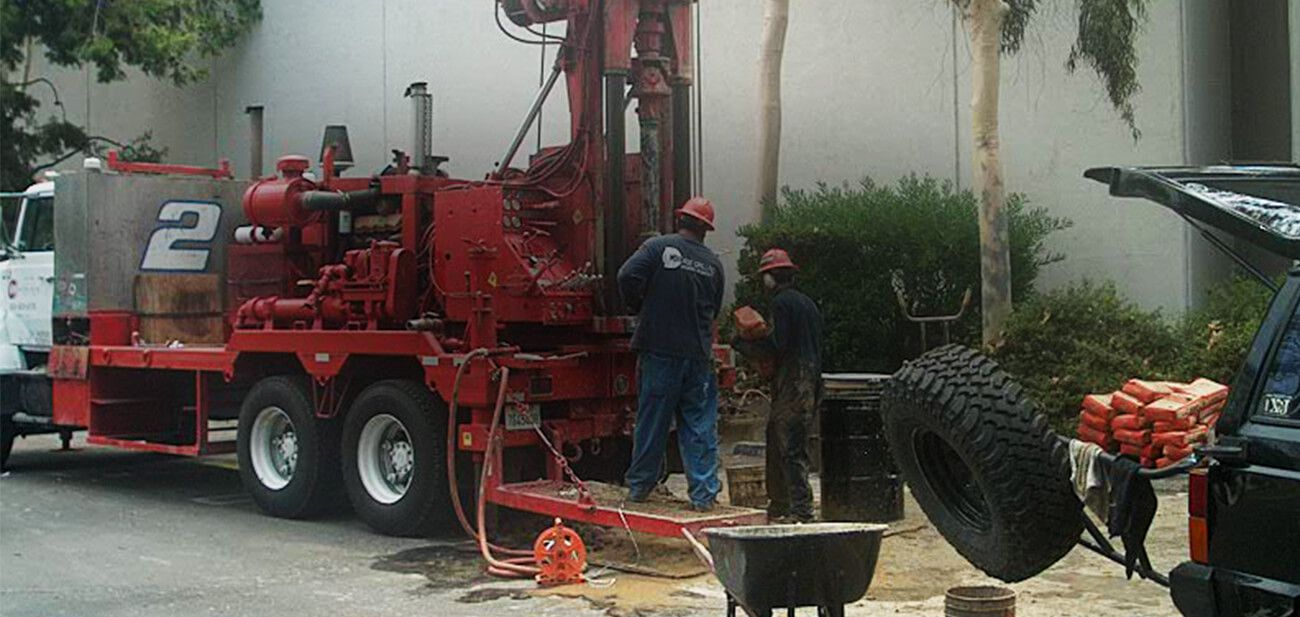Comprehending Geotheta: Essential Insights into Geotechnical Engineering Innovations
Comprehending Geotheta: Essential Insights into Geotechnical Engineering Innovations
Blog Article
Browsing Geotechnical Services: The Value of Geotechnical Information, Soil Compaction Screening, and Pavement Layout in Ensuring Structural Stability
Geotechnical solutions, encompassing the production of geotechnical reports, carrying out dirt compaction screening, and meticulous pavement design, serve as the foundation of making sure architectural honesty. geotheta. These important components not only lay the groundwork for successful job implementation however additionally minimize possible threats that can endanger the security and durability of a construction project.
Importance of Geotechnical Reports
Geotechnical reports play a vital function in supplying in-depth understandings into the soil and rock problems of a website, necessary for making sure the architectural stability of building projects. These reports are a fundamental part of the initial site investigation process, supplying beneficial details that affects the style, construction approaches, and total expediency of a job. By evaluating soil make-up, security, and potential hazards such as sinkholes or landslides, geotechnical records allow engineers to make enlightened choices concerning structure style and building techniques.
In addition, geotechnical reports aid in danger assessment and reduction methods, helping task stakeholders comprehend the potential obstacles that may emerge during building. Through thorough assessment and analysis of geotechnical information, engineers can create options to address site-specific problems, guaranteeing the lasting stability and safety and security of the structure. Inevitably, the extensive nature of geotechnical records works as a critical foundation for effective project preparation and execution, reducing threats and improving total project results.

Function of Soil Compaction Testing
Exactly how vital is the analysis of dirt compaction via screening for making certain the security and long life of building and construction tasks? Dirt compaction testing plays a crucial function in the building industry by guaranteeing that the soil underneath a structure is correctly compacted to protect against and sustain the designated load settlement (geotheta). Effectively compressed soil offers a stable structure for structures, roads, and other frameworks, minimizing the danger of structural failing and pricey repair services in the future
Soil compaction screening entails determining the density of the dirt and comparing it to the maximum thickness attainable for that particular dirt type. If the dirt has been compressed adequately to sustain the organized structure, this aids engineers determine. By carrying out soil compaction examinations during building and construction, engineers can recognize any type of areas that need additional compaction and take rehabilitative steps prior to waging more building.
Significance of Pavement Layout
Analyzing dirt compaction via screening not only guarantees the stability and long life of building and construction tasks however likewise lays a critical foundation for reliable sidewalk style. Proper sidewalk layout thinks about elements such as website traffic tons, environmental conditions, dirt attributes, and material residential or commercial properties to create a durable and sustainable surface. By including information from soil compaction examinations, engineers can determine the ideal thickness, materials, and layering for the sidewalk to endure awaited anxieties and maintain architectural stability over time.
Guaranteeing Architectural Stability
These records give essential information on soil composition, stability, and potential risks, aiding in informed decision-making throughout the layout and building and construction stages. In addition, performing thorough dirt compaction screening is critical to make certain that the dirt underneath pavements or foundations is properly compressed to sustain the designated loads and avoid settlement concerns.
In addition, carrying out robust pavement design techniques is necessary for making sure the structural integrity of roadways, parking area, and other paved surface areas. Proper pavement design takes into consideration aspects such as web traffic quantity, ecological conditions, and dirt attributes to create risk-free and durable transport facilities. By sticking to these methods and utilizing geotechnical solutions efficiently, building and construction jobs can enhance their architectural integrity, decrease dangers of failing, and make sure the long-term efficiency of the built atmosphere.
Safeguarding Versus Risks
Due to the crucial relevance positioned on making certain structural honesty through thorough attention to material option and soil testing, guarding against threats site here becomes vital in preserving the security and durability of building and construction projects. Dangers in building and construction projects can come from numerous sources, including all-natural disasters, soil instability, or style imperfections. To safeguard against these dangers, thorough danger evaluation procedures should be executed at every stage of the task. This consists of comprehensive geotechnical investigations to determine possible threats, such as soil erosion or seismic activity, that might jeopardize the job's security.
Additionally, creating backup plans and executing robust monitoring systems can aid minimize unpredicted dangers that may occur during building and construction. Normal assessments and high quality control steps should be executed to make certain that products are utilized according to requirements which building practices comply with market requirements. By proactively identifying and resolving prospective risks, building and construction jobs can improve their strength and reduce the likelihood of architectural failures, inevitably making sure the safety and long life of the developed environment.
Conclusion

Dirt compaction screening plays a crucial function in the building industry by guaranteeing that the soil below a framework is effectively compressed to look at this website sustain the designated tons and avoid negotiation.Soil compaction testing entails gauging the density of the soil and contrasting it to the optimum density achievable for that particular dirt type (geotheta). By conducting dirt compaction examinations during construction, designers can determine any type of areas that call for extra compaction and take corrective measures prior to proceeding with further building and construction
Furthermore, conducting thorough dirt compaction testing is essential to make certain that the dirt beneath structures or pavements is properly compressed to support the desired loads and protect against settlement issues.
In have a peek at this website final thought, geotechnical reports, dirt compaction testing, and sidewalk design play vital roles in making certain the structural honesty of building tasks.
Report this page